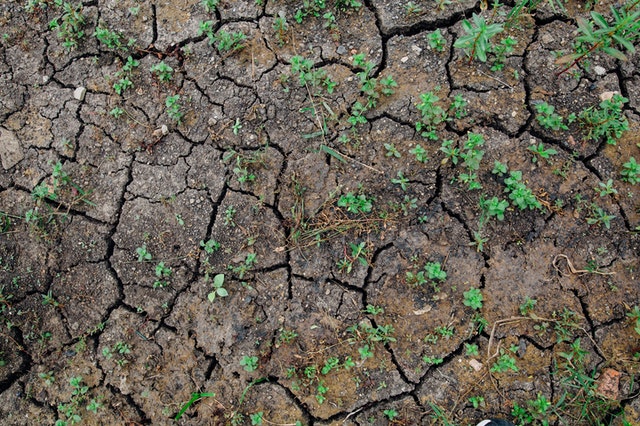
When you hear the term feng shui, you most often envision the interior of your home. Feng shui, on the other hand, is not restricted to interior environments!
There are several methods to employ feng shui concepts in your garden to create an outdoor paradise. We’ve compiled a list of easy rules to assist you to bring more healthy energy into your yard, no matter how big or little it is.
Work with what you have, even if it is a little garden space. Depending on the size of your garden, you can easily scale things up or down.
The Circulation of Qi
 In general, the concepts that apply to a home may be applied to an outside environment as well. The overall purpose is to generate a smooth and soothing flow of qi, or life force energy. You want to be able to wander freely through your garden, without feeling obstructed or restricted.
In general, the concepts that apply to a home may be applied to an outside environment as well. The overall purpose is to generate a smooth and soothing flow of qi, or life force energy. You want to be able to wander freely through your garden, without feeling obstructed or restricted.
By leading you around the space, well-placed retaining walls, paths, and taller plants may actually assist guide the flow of qi. Garden beds should also have rounded edges and undulating patterns to promote a smoother flow of qi.
You may also make a meandering route using oddly shaped stones. This allows the qi to flow and settle gently in the space, which is more helpful than a garden with straight lines and abrupt corners.
Set the Energy and Tone
 It’s critical to have a focal point in your garden that attracts the eye deeper into the space and generates comfort. Consider the sort of energy you want to develop when determining what to feature as your main point.
It’s critical to have a focal point in your garden that attracts the eye deeper into the space and generates comfort. Consider the sort of energy you want to develop when determining what to feature as your main point.
A relaxing water feature, a striking blooming tree, or a quiet sitting area, for example, will provide a different type of energy to your room than a hot fire feature. Metal wind chimes, for example, may lend a touch of whimsy to your landscape.
Harmony may be achieved by balancing Yin and Yang
 Using the yin and yang feng shui principles will aid in the creation of a more balanced design. This may be accomplished by balancing harsh (yang) and soft (yin) landscape treatments.
Using the yin and yang feng shui principles will aid in the creation of a more balanced design. This may be accomplished by balancing harsh (yang) and soft (yin) landscape treatments.
Think rocks and stones to bring in more yang energy, since they create structure, limits, and definite lines. Add plant material around the hardscaping to soften the edges and bring in yin energy for balance. With their soft, swaying movement, ornamental grasses are a fantastic illustration of something that represents yin energy.
Plants of various varieties can also be used to balance yin and yang. Taller plants attract more yang energy, whilst lower ground coverings attract more yin energy. Including both adds complexity and variation to the area, as well as making it feel more harmonious.
Color Feng Shui
 When it comes to feng shui and color, you may keep things basic when planning an outdoor environment. Using the five-element color theory to achieve equilibrium is one technique to deal with feng shui and color.
When it comes to feng shui and color, you may keep things basic when planning an outdoor environment. Using the five-element color theory to achieve equilibrium is one technique to deal with feng shui and color.
The five components symbolize various sorts of energy that all interact with one another, and each element is connected with a certain color. You do not require to have all five components represented in your space.
Instead, pick a handful that has the energy you wish to attract to your garden. Here are a few ways to incorporate the five elements into your outdoor area through color, as well as what they represent:
Element of Wood
 The wood element is all about vigor and development. Because it is associated with the color green, it is simple to include into a garden. Wood energy may be absorbed by any tree, plant, or shrub.
The wood element is all about vigor and development. Because it is associated with the color green, it is simple to include into a garden. Wood energy may be absorbed by any tree, plant, or shrub.
Element of Fire
 The fire element is associated with warmth and friendliness. It’s associated with the color red, which you may include into your decor with plants like Japanese maple or red geraniums.
The fire element is associated with warmth and friendliness. It’s associated with the color red, which you may include into your decor with plants like Japanese maple or red geraniums.
Element of the Earth
 The earth element’s energy is highly grounded. Yellow flowers, such as black-eyed Susans or yellow blooming potentillas, will add earth to your landscape.
The earth element’s energy is highly grounded. Yellow flowers, such as black-eyed Susans or yellow blooming potentillas, will add earth to your landscape.
Element of Metal
 The vitality of the metal element is distinct and concise. Because it is associated with the color white, you may incorporate it into your garden using plants such as wedding wreath spirea or shasta daisy.
The vitality of the metal element is distinct and concise. Because it is associated with the color white, you may incorporate it into your garden using plants such as wedding wreath spirea or shasta daisy.
Element of Water
 The water element is both refreshing and soothing. Water is portrayed through the color black (or extremely dark navy blue), which is more difficult to execute with plant material due to the scarcity of black plants.
The water element is both refreshing and soothing. Water is portrayed through the color black (or extremely dark navy blue), which is more difficult to execute with plant material due to the scarcity of black plants.
Look for anything with black fruit, such as a blackberry. A water feature can also be used to incorporate the water element.
With Intention, Work
 Feng shui ideas complement landscape design nicely, and many of their principles overlap. You may also establish an aim for your place when applying feng shui when creating an outdoor space or garden.
Feng shui ideas complement landscape design nicely, and many of their principles overlap. You may also establish an aim for your place when applying feng shui when creating an outdoor space or garden.
You can opt to concentrate on a certain sort of energy by including one or more of the factors outlined above.
Another option to work with your aim is to lay out your garden with the Bagua, a feng shui tool. This enables you to discover certain areas, such as money or partnership, in which you may desire to improve.
To lay the bagua in your yard, first, locate the primary access onto the property, and then position the Bagua in accordance with the entry for your whole lot or backyard. Working with the bagua may be difficult at times, and it’s typically a good idea to work with a professional to ensure it’s set correctly.
Keep things simple when in doubt! Set an overarching intention when you begin building your outdoor environment.
For example, perhaps you want to create a relaxing and pleasant environment. Keep it in mind, and then adhere to the fundamental rules outlined above.
What is feng shui landscaping?
Feng shui landscaping is an ancient design philosophy that aims to create a space that aligns with the natural energy of the environment. It is driven by an understanding of how living beings and their surroundings interact on different levels, and it employs features such as water, vegetation, and buildings in order to facilitate harmony.
How do I feng shui my front garden?
Facing the front door to the home, the best garden should have a small, round pond in front of it with a plant or two at its side. This will help to increase the luck and prosperity in your home.
What is feng shui and how is it used to inform garden design in China?
Feng shui is a Chinese philosophical system that seeks to bring balance and harmony to human life by understanding the relationship between man and nature. When applied to garden design in China, feng shui takes into account the flow of qi energy in a space, the five elements, and the yin/yang duality.
How do I feng shui my entire backyard garden?
Feng shui is the ancient Chinese art of placement. When applied to your garden, it can help you increase the flow of chi. One way to do this is by placing plants that are centered in your yard at the four corners of a square, creating a natural crossroads for energy to flow.

